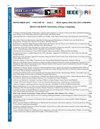Hybrid Adaptive Greedy Algorithm Addressing the Multi-Robot Path Planning Problem
IF 1.3
4区 工程技术
Q3 COMPUTER SCIENCE, INFORMATION SYSTEMS
引用次数: 0
Abstract
In the past few years, path planning and scheduling became a high-impact research topic due to their real-world applications such as transportation, manufacturing and robotics. This paper focuses on the Multi-robot Path Planning (MPP) problem, which consists of planning the route for a set of robots in a given static environment. The main goal is to navigate the robots from a starting point to a destination point without colliding with other robots or static obstacles. We propose a hybrid method -- H* -- that combines adaptive route planning based on A* and local search algorithm to optimize routes in the context of the MPP problem. The A* algorithm finds the optimal solution for the route search problem and a heuristic approach is applied to scale up to the multi-agent scenario.The overall length of determined paths and the number of robot collisions is minimized during the evaluations specific small-scale environments.Computational experiments are conducted for multi-robot scenarios and the performance of H* is compared to several path-searching algorithms including A* variations extended for the multi-agent scenario and coevolutionary algorithms.Experimental results demonstrate that H* outperforms the A* based heuristic approaches in terms of path length. H* shows similar performance as the coevolutionary method and performs better on smaller-scale maps.多机器人路径规划问题的混合自适应贪心算法
在过去的几年里,路径规划和调度由于其在交通、制造业和机器人等现实世界中的应用而成为一个高影响力的研究课题。多机器人路径规划(MPP)问题是指在给定的静态环境中对一组机器人进行路径规划。主要目标是在不与其他机器人或静态障碍物发生碰撞的情况下,将机器人从起点导航到目的地。我们提出了一种混合方法——H*,该方法结合了基于a *的自适应路由规划和局部搜索算法来优化MPP问题中的路径。A*算法找到路径搜索问题的最优解,并应用启发式方法扩展到多智能体场景。在评估特定的小尺度环境时,确定路径的总长度和机器人碰撞的次数是最小的。在多机器人场景下进行了计算实验,并将H*算法与多智能体场景下扩展的A*变量和协同进化算法等几种路径搜索算法的性能进行了比较。实验结果表明,H*在路径长度方面优于基于A*的启发式方法。H*表现出与协同进化方法相似的性能,并且在小尺度地图上表现得更好。
本文章由计算机程序翻译,如有差异,请以英文原文为准。
求助全文
约1分钟内获得全文
求助全文
来源期刊

IEEE Latin America Transactions
COMPUTER SCIENCE, INFORMATION SYSTEMS-ENGINEERING, ELECTRICAL & ELECTRONIC
CiteScore
3.50
自引率
7.70%
发文量
192
审稿时长
3-8 weeks
期刊介绍:
IEEE Latin America Transactions (IEEE LATAM) is an interdisciplinary journal focused on the dissemination of original and quality research papers / review articles in Spanish and Portuguese of emerging topics in three main areas: Computing, Electric Energy and Electronics. Some of the sub-areas of the journal are, but not limited to: Automatic control, communications, instrumentation, artificial intelligence, power and industrial electronics, fault diagnosis and detection, transportation electrification, internet of things, electrical machines, circuits and systems, biomedicine and biomedical / haptic applications, secure communications, robotics, sensors and actuators, computer networks, smart grids, among others.
 求助内容:
求助内容: 应助结果提醒方式:
应助结果提醒方式:


